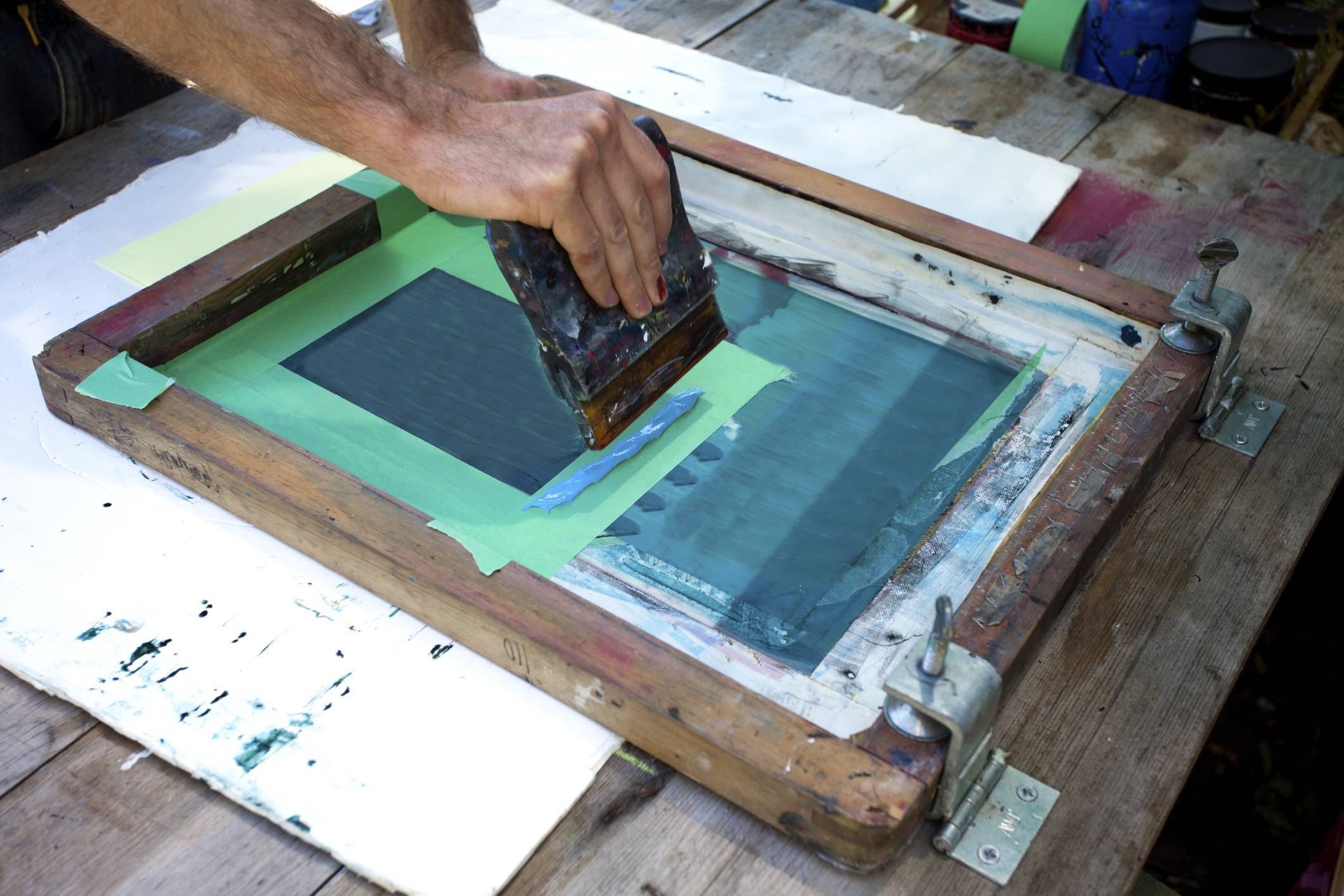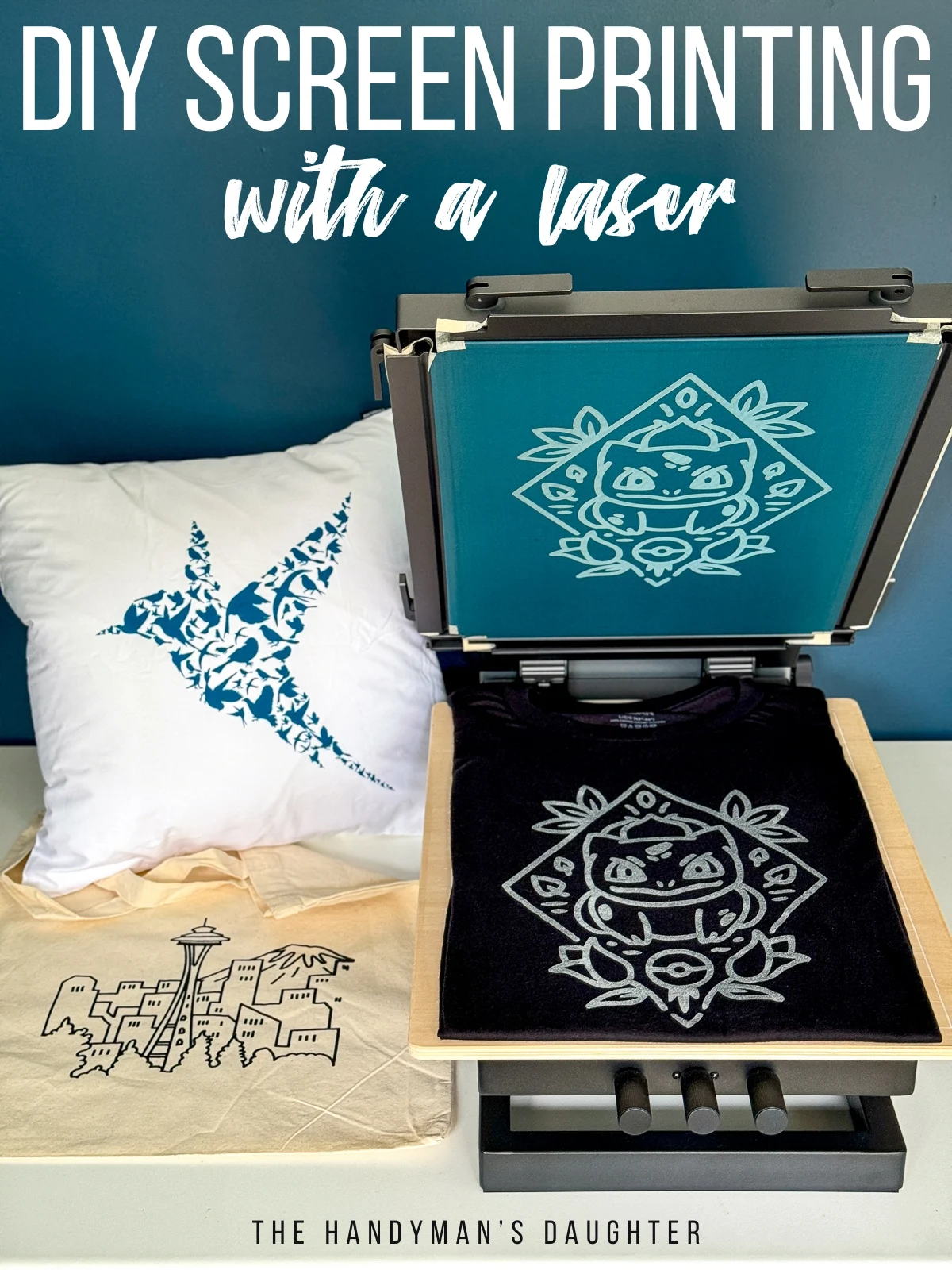ChatGPT said: 10:9 Design Embroidery success stories: how clients boosted their brand identity
Discover the Different Sorts Of Screen Printing Techniques for Your Following Project
Screen printing offers a diverse series of methods that can improve any type of imaginative job. From traditional techniques like serigraphy to contemporary technologies such as direct-to-garment printing, each method has its one-of-a-kind advantages. Specialized options, consisting of green and metallic inks, introduce much more possibilities. Recognizing these strategies can significantly influence the last result. The difficulty lies in choosing the most suitable approach for specific requirements and desired impacts. What aspects should one take into consideration?

The Essentials of Screen Printing
Screen printing might seem facility, it is basically a simple process that entails transferring ink through a mesh screen onto different surfaces. The method begins with the creation of a pattern, which defines the layout to be published. This stencil is affixed to a mesh screen, usually made of polyester or nylon. Once the stencil remains in place, ink is put on the screen and pressed through the mesh using a squeegee, resulting in the wanted pattern being printed on the underlying product.
Screen printing can be carried out on a large range of substrates, consisting of textile, paper, and plastic, making it a flexible choice for various jobs. The process permits elaborate styles and vibrant colors, making it preferred in sectors such as fashion, advertising and marketing, and art. Comprehending these essentials outfits people with the fundamental understanding needed to discover advanced methods in screen printing.
Standard Screen Printing Techniques
Standard screen printing strategies have actually been used for centuries, preserving the craftsmanship and creativity of this method. This technique utilizes a mesh screen to transfer ink onto a substratum, such as textile or paper, permitting for resilient and vibrant styles. The process begins with developing a pattern, which obstructs specific areas of the screen to regulate where the ink will certainly be used.
One prominent method is serigraphy, typically used for imaginative prints and restricted versions. An additional is making use of water-based inks, which are environment-friendly and give a soft feeling on fabrics - 10:9 Design Screen Printing. Furthermore, traditional techniques can consist of hands-on printing, where artisans apply ink with a squeegee, making certain accuracy and interest to detail
These strategies remain valued in the sector for their responsive top quality and the special appearances they generate, interesting both creators and consumers who value the heritage of screen printing.
Digital Screen Printing Innovations
As the need for faster production and modification in the printing market has actually surged, electronic screen printing developments have actually become a game-changer. This innovation mixes traditional screen printing methods with electronic processes, allowing for rapid prototyping and intricate styles that were formerly challenging to attain. One significant improvement is the introduction of direct-to-garment (DTG) printing, which facilitates top quality, full-color prints on different fabrics without the demand for displays. Additionally, developments in ink formulas have actually brought about eco-friendly options that maintain vibrant shades while lessening environmental effect. Using automated systems additionally enhances production, decreasing labor prices and boosting accuracy. These developments not just cater to tiny set orders and tailored layouts but likewise enable quicker turn-around times, making them ideal for organizations concentrated on meeting client demands in a hectic market. Digital screen printing, as a result, stands for an essential advancement in the domain name of printing methods.
Specialized Screen Printing Approaches
Discovering specialized screen printing approaches exposes a diverse selection of methods that press the limits of imagination and functionality in the printing market. Amongst these, glow-in-the-dark inks offer a distinct visual impact, making designs come alive in low-light conditions. Metallic inks, recognized for their shimmering coating, add a touch of deluxe to published materials. One more cutting-edge more information method is discharge printing, which eliminates dye from the fabric instead of including ink, resulting in a soft, vintage feel. High-density printing creates an increased appearance externally, improving tactile interaction. In addition, water-based inks are acquiring appeal for their lively colors and lowered environmental effect. Each of these specialized methods satisfies specific style requirements, making it possible for artists and brands to produce standout products that resonate with their target markets. By leveraging these approaches, businesses can elevate their screen printing tasks to new heights, making certain memorable impacts.
Eco-Friendly Screen Printing Options
Green screen printing choices are gaining grip as the market shifts towards sustainability. Sustainable ink choices and using eco-friendly materials are vital elements in reducing the environmental effect of the printing procedure. By embracing these practices, screen printers can contribute to a more sustainable future while preserving high-grade outcomes.
Lasting Ink Choices

Biodegradable Products Use
As the screen printing market develops, the consolidation of biodegradable products is coming to be progressively vital for ecologically conscious methods. Manufacturers and developers are currently checking out inks and substratums made from all-natural, renewable energies that disintegrate extra successfully than conventional equivalents. These eco-friendly alternatives reduce plastic waste and lessen ecological influence, straightening with the growing demand for lasting items.
Typical instances include water-based inks and organic cotton materials, both website here of which decrease damaging chemicals and advertise eco-friendliness. Brands that embrace these materials usually improve their market charm, drawing in consumers who prioritize sustainability. As understanding of environmental problems remains to climb, the change towards biodegradable materials in screen printing is likely to obtain energy, cultivating a greener sector criterion.
Picking the Right Strategy for Your Task
Exactly how can one figure out the most appropriate screen printing strategy for a details task? The decision depends upon a number of aspects, including the product to be published on, the intricacy of the layout, and the preferred production volume - 10:9 Design Texas. Direct-to-garment printing is suitable for elaborate layouts with countless colors, while traditional screen printing stands out for larger runs of easier graphics.
Furthermore, consideration of the end-use of the published item is crucial. For outside applications, strategies that supply longevity and weather condition resistance, such as plastisol ink, might be preferred. Alternatively, environmentally-conscious tasks may gain from biodegradable materials or water-based inks.
Eventually, recognizing the project's unique needs enables an informed option, guaranteeing both aesthetic charm and useful long life. By examining style complexity, product compatibility, and manufacturing scale, one can successfully choose the most ideal screen printing strategy to fulfill their project's goals.
Regularly Asked Inquiries
What Is the Background of Screen Printing?
Screen printing stemmed in ancient China around 1000 AD, progressing with Japan and Europe. By address the 20th century, it came to be popular in commercial art and fashion, reinventing just how layouts were produced and distributed worldwide.

Exactly how Do I Prepare Art Work for Screen Printing?
To prepare art work for screen printing, one need to assure high resolution, utilize an appropriate color setting, produce different layers for every shade, and convert message to outlines, assuring compatibility with the printing procedure and preferred result.
What Products Are Best for Screen Printing?
The finest products for screen printing include high-grade inks, durable screens, and appropriate substratums like cotton, polyester, or blends. Additionally, utilizing ideal solution and mops can enhance the printing process and final results.
Can I Evaluate Publish in the house?
Yes, screen printing at home is possible. With the right materials, configuration, and methods, people can develop high-quality prints. Cautious factor to consider of work area and devices is crucial for effective outcomes.
What Are Typical Errors in Screen Printing?
Usual mistakes in screen printing include inappropriate exposure times, insufficient ink uniformity, imbalance of displays, not enough cleaning of products, and overlooking to test prints. These errors can compromise the quality and precision of the end product.
Screen printing may appear complex, it is fundamentally a simple procedure that includes transferring ink with a mesh screen onto various surfaces. As the need for faster production and modification in the printing industry has risen, digital screen printing developments have arised as a game-changer. Exploring specialized screen printing approaches reveals a diverse variety of strategies that press the limits of creative thinking and performance in the printing industry. The ideal materials for screen printing include high-quality inks, durable screens, and suitable substratums like cotton, polyester, or blends (10:9 Design Embroidery). Common blunders in screen printing include incorrect exposure times, inadequate ink consistency, misalignment of displays, not enough cleaning of products, and overlooking to check prints